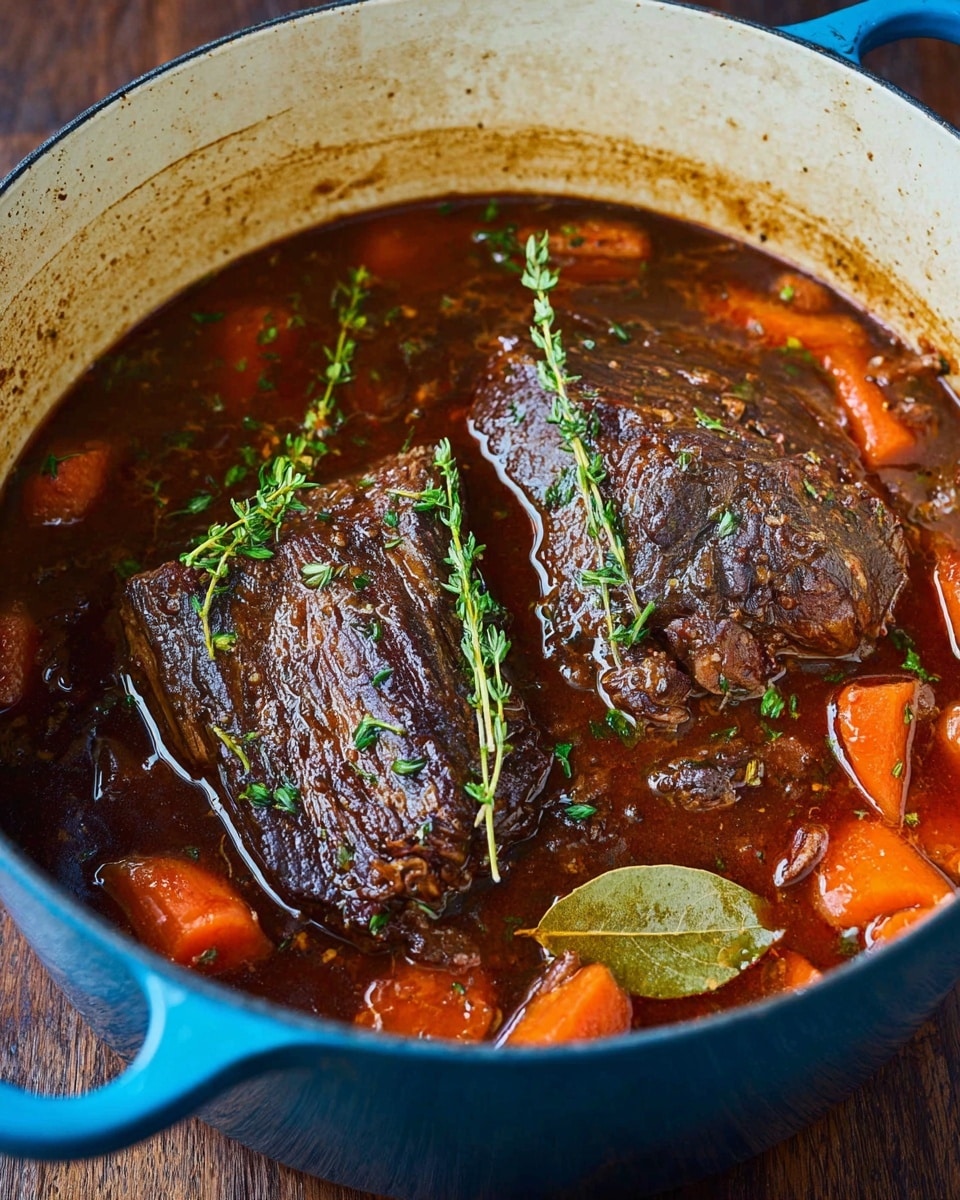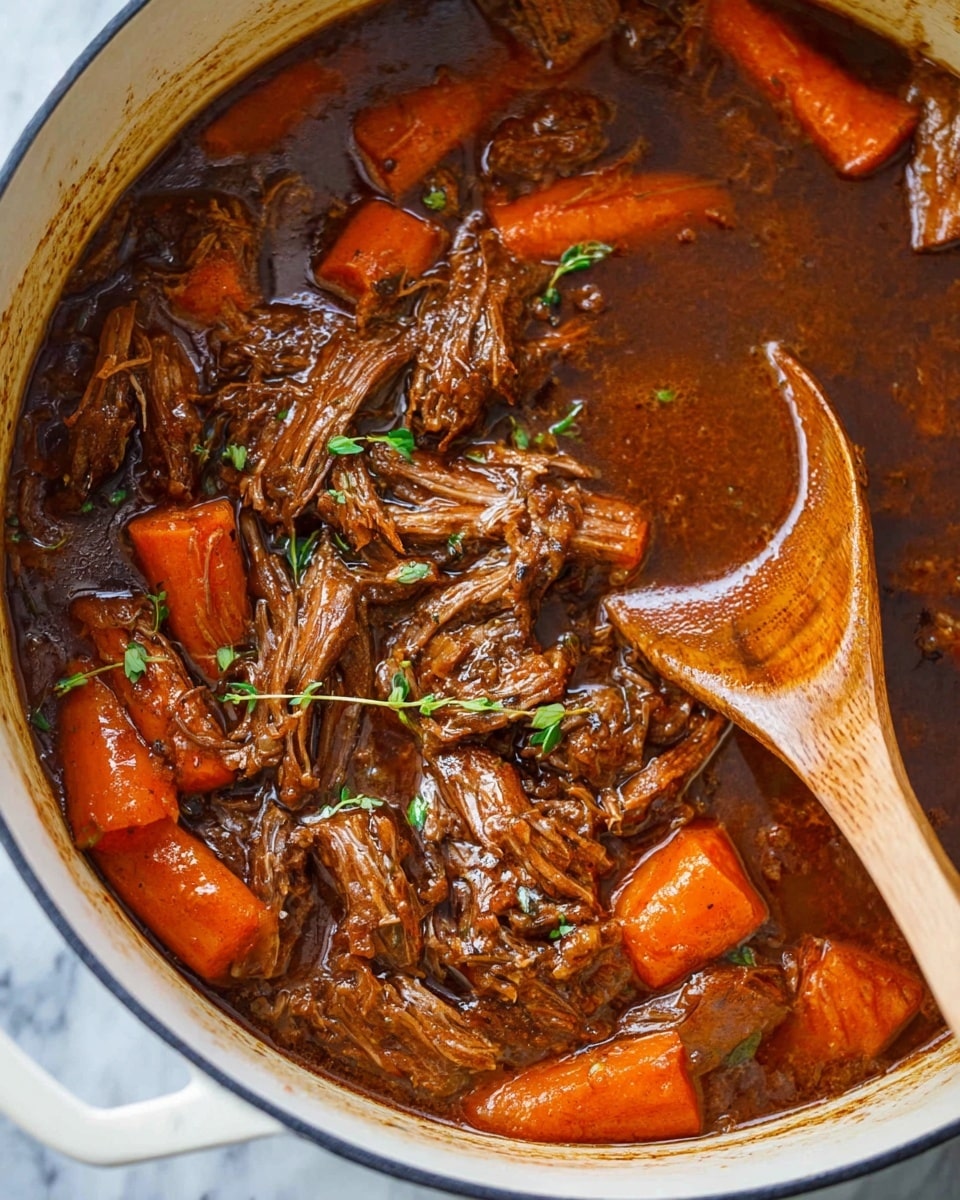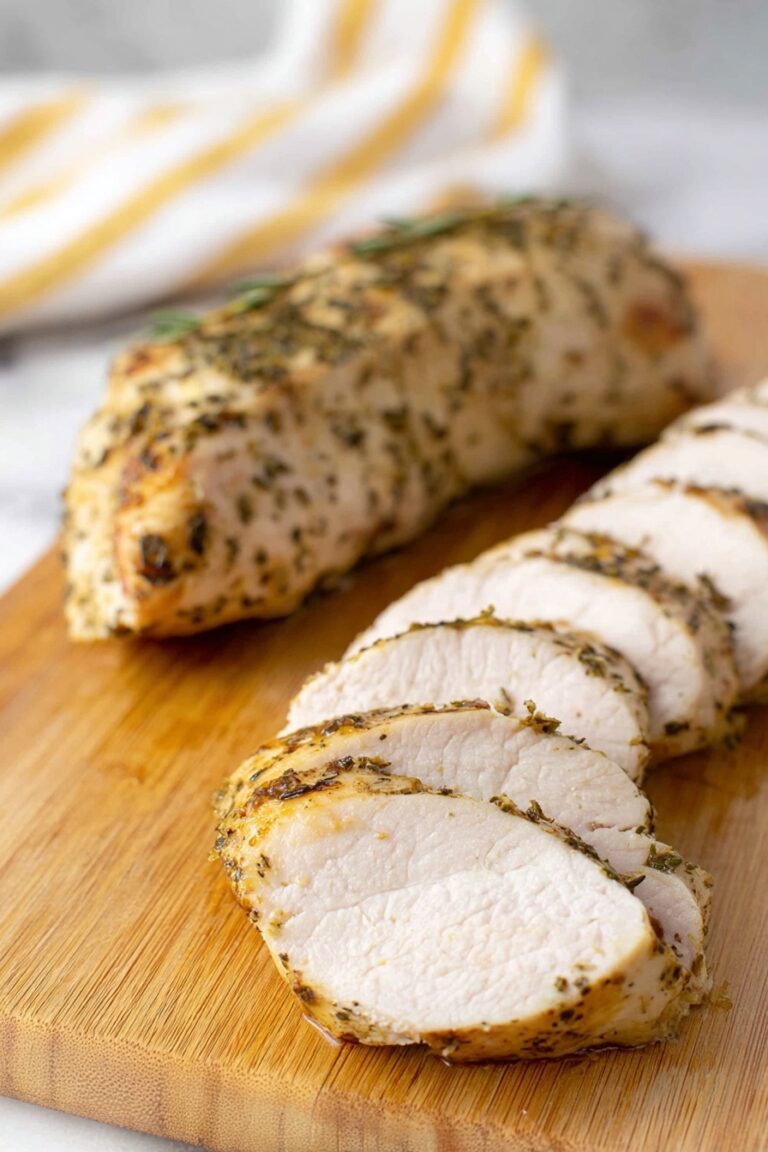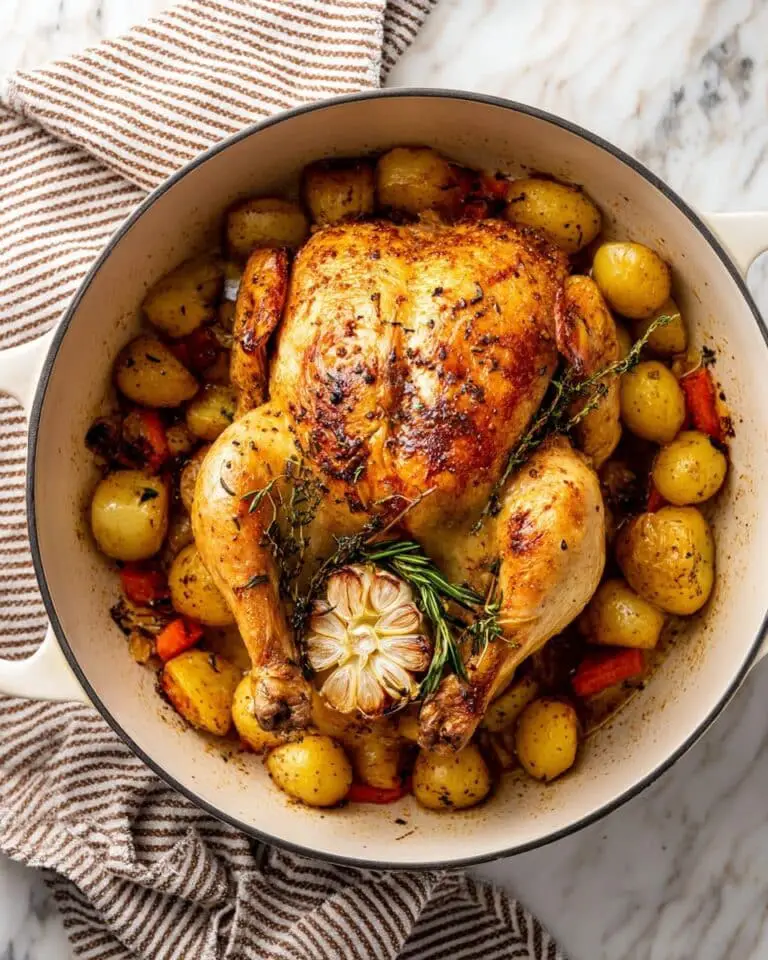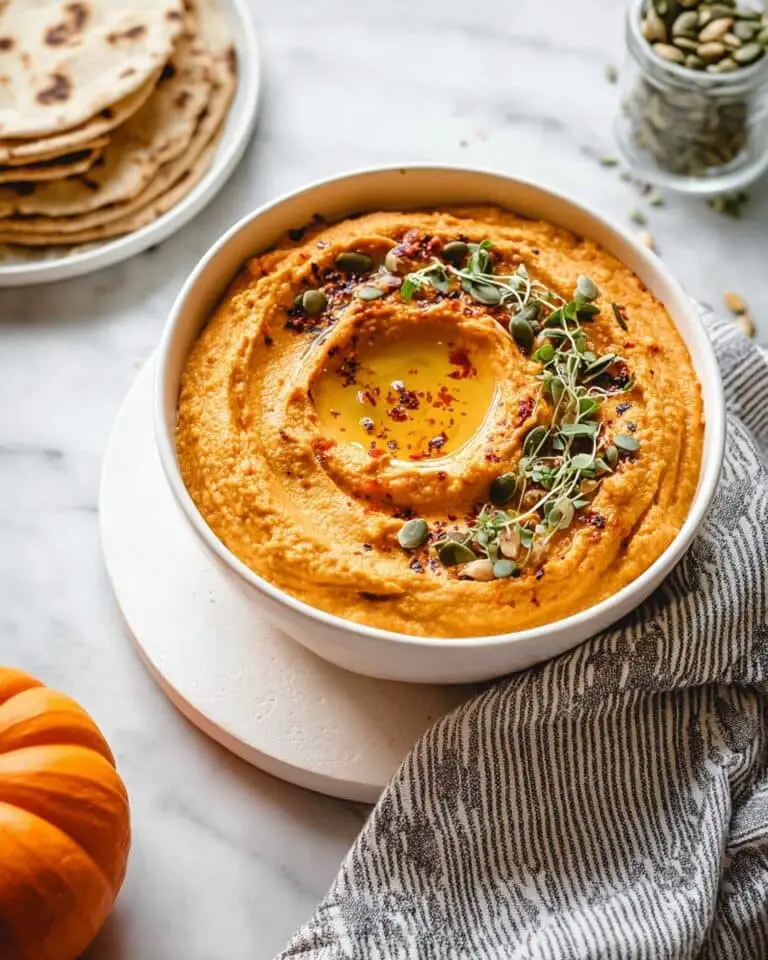There’s something truly comforting about a Classic Pot Roast Recipe—maybe it’s the way the meat slowly melts into tender, savory bliss or the rich aroma that fills your kitchen and feels like a warm hug. I love this recipe because it’s the kind of meal you can prepare ahead and let the oven work its magic while you relax, making it perfect for cozy weekends or family gatherings.
When you make this classic pot roast, you’ll find that the balance of hearty carrots, fresh herbs, and that luscious gravy elevates simple ingredients into something special. Every time I serve this to friends and family, they go crazy for how the flavors deepen with time, and I know you’ll appreciate how approachable and rewarding this recipe is to make yourself.
Why You’ll Love This Recipe
- Tender, Flavorful Meat: Slow roasting makes the chuck roast melt-in-your-mouth tender every time.
- Rich, Homemade Sauce: The tomato paste, red wine, and herbs create a deeply satisfying gravy that’s better than store-bought.
- Simple Yet Impressive: With minimal hands-on time, this recipe yields impressive results perfect for family dinners or guests.
- Flexible and Adaptable: You can easily adjust vegetables or herbs to suit your taste or pantry contents.
Ingredients You’ll Need
The ingredients for this Classic Pot Roast Recipe are straightforward but work beautifully together to build layers of rich, comforting flavor. Sourcing a good-quality chuck roast and fresh herbs really makes a difference here, so don’t skimp!
- Beef chuck roast: Choose a well-marbled piece around 4-5 pounds for the best flavor and tenderness.
- Coarse salt (kosher salt preferred): Crucial for seasoning the meat to penetrate deeply.
- Freshly ground black pepper: Adds a subtle earthiness without overpowering the beef.
- Light olive oil or high-heat oil: For a perfect sear that locks in juices.
- Yellow onion: Adds sweetness and depth when sautéed.
- Garlic cloves: Fresh and aromatic, they elevate the sauce.
- Tomato paste: Brings umami and richness to the braising liquid.
- Dry red wine (Cabernet Sauvignon or Pinot noir): Helps deglaze the pan and adds complexity.
- Beef stock: The foundation of the braising liquid, amplifying beefy flavors.
- Carrots: Sweet and tender when roasted with the meat.
- Bay leaves: A classic aromatic to build flavor.
- Fresh thyme or dried thyme: Earthy herbaceous notes that marry well with beef.
- Fresh parsley: Adds color and fresh brightness at the end.
- Cornstarch or flour (optional): For thickening the sauce if you like it a bit gravy-like.
Variations
I like to switch things up depending on the season or what I have on hand, and this Classic Pot Roast Recipe is so forgiving and adaptable that you can easily make it your own.
- Vegetable swaps: Sometimes I add parsnips or potatoes with the carrots to make it even heartier.
- Herb variations: Rosemary or sage can replace thyme for a woodsy twist I’ve enjoyed when entertaining.
- Alcohol-free option: Replace wine with extra beef stock and a splash of balsamic vinegar for acidity.
- Slow cooker method: You can cook this low and slow in a crockpot for 7-8 hours if you don’t want to use the oven.
How to Make Classic Pot Roast Recipe
Step 1: Season and Rest Your Roast
Start by generously seasoning your beef chuck roast with salt and pepper on all sides. Then, let it sit uncovered at room temperature for about an hour — this simple trick helps the roast cook more evenly and develop better flavor. Don’t skip this step; I learned that rushing into the oven leaves the meat unevenly cooked, which you definitely want to avoid.
Step 2: Sear to Lock in Juices
Heat your Dutch oven over medium-high heat with olive oil until shimmering. Place the roast in the pot and sear it until it’s a beautiful golden brown on every side—about 3 minutes per side. This step creates that crave-worthy crust, and trust me, it’s worth the extra few minutes. Once browned, transfer the roast to a plate so you can cook the veggies in the same pot.
Step 3: Sauté Aromatics and Add Flavor
Reduce the heat to medium, then add onions and cook until softened and golden, about 4-5 minutes. Toss in the chopped garlic and stir for another 30 seconds until fragrant — your kitchen will smell amazing at this point!
Stir in tomato paste and cook for 2 minutes. This step brings out the paste’s sweetness and depth. Next, pour in the red wine and use a wooden spoon to scrape up all those flavorful browned bits stuck to the bottom. Let the wine simmer until it reduces by about 25%, which takes 2-3 minutes.
Step 4: Assemble and Slow-Bake
Add beef stock, fresh herbs like thyme and parsley, bay leaves, additional salt, and pepper to taste. Nestle the roast back into the pot and scatter carrot pieces around it. Bring the whole pot to a gentle boil on the stove, cover, then transfer to the oven set at 325°F (165°C).
Bake for 3 to 4 hours depending on the size of your roast—check for fork-tender meat that pulls apart easily. I usually poke mine at around 3 hours for a 4-pound cut and then every half hour after if needed. It’s the slow braise that turns this into a melt-in-your-mouth feast.
Step 5: Thicken the Sauce (Optional!)
When your pot roast is done, take out the meat and veggies, keeping them warm. You can thicken the cooking liquid into a luscious gravy using cornstarch mixed with cold water or a beurre manié made of butter and flour. Bring the sauce to a simmer after adding your thickener and cook until it’s velvety smooth. This extra step is a personal favorite because that gravy is when the magic truly happens.
Pro Tips for Making Classic Pot Roast Recipe
- Room Temperature Meat: Bringing the roast to room temp before cooking prevents uneven cooking and seizing.
- Don’t Skip Searing: Those browned bits add so much flavor to your sauce — it’s where much of the magic starts.
- Low and Slow Cooking: Patience is key; the low oven temp ensures tender, juicy meat without drying it out.
- Test for Doneness: Use a fork to check if the roast pulls apart easily, or an instant-read thermometer aiming for 200-210°F.
How to Serve Classic Pot Roast Recipe
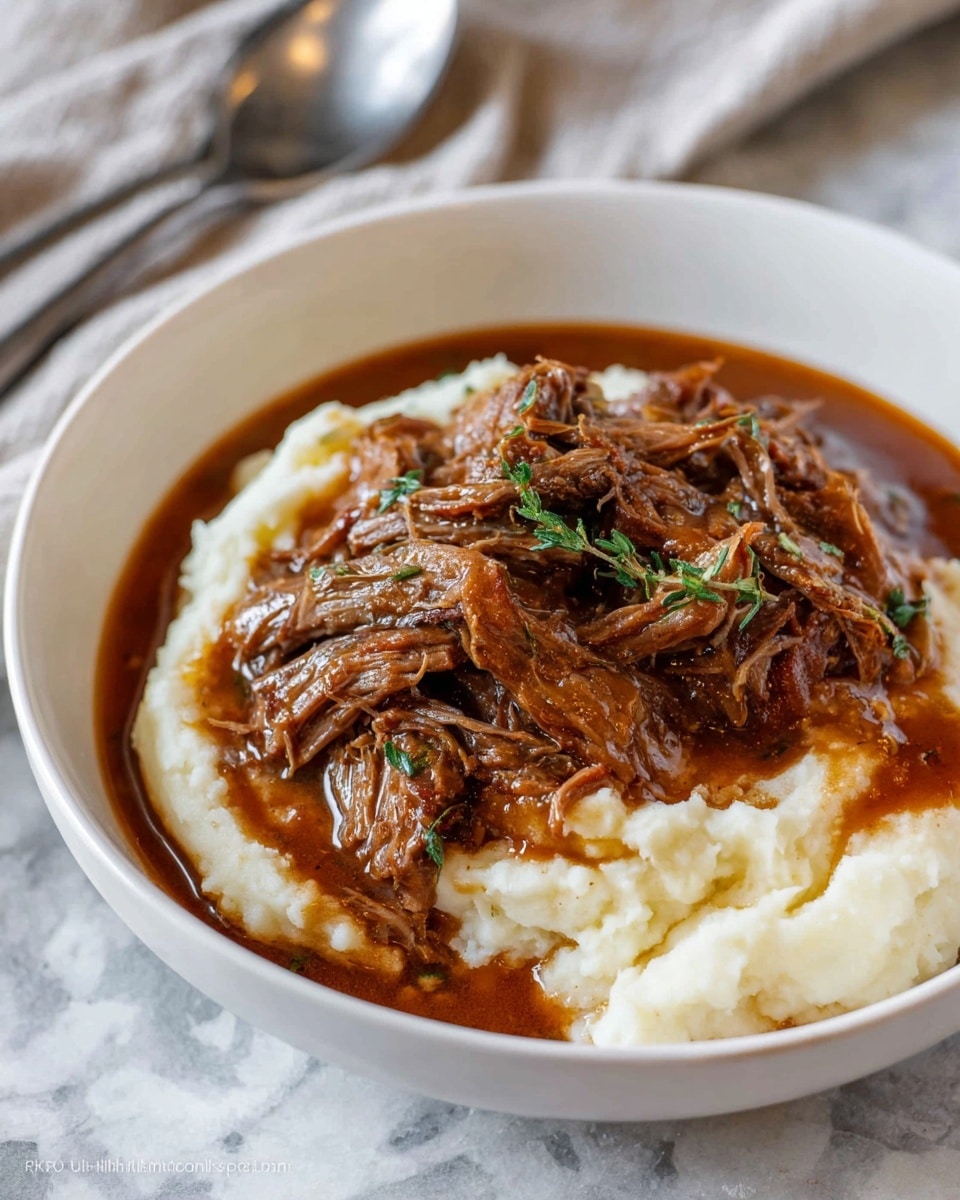
Garnishes
I love sprinkling freshly chopped parsley over the top to add a pop of color and fresh flavor — it brightens the rich sauce so beautifully. Sometimes a little cracked black pepper on top or even a handful of chopped chives adds an extra layer of aroma that my guests always appreciate.
Side Dishes
Classic mashed potatoes or creamy polenta are my go-to sides to soak up that flavorful gravy. Roasted or steamed green beans and a simple green salad help balance out the richness, making the meal feel complete without complicating the prep.
Creative Ways to Present
For a special occasion, I’ve served the shredded pot roast piled high on crusty bread for sliders or layered over buttered egg noodles for a hearty twist. You can also plate it family-style with plenty of sauce in a rustic cast-iron dish — it looks inviting and encourages everyone to dig in.
Make Ahead and Storage
Storing Leftovers
I always keep leftovers in airtight containers in the fridge for up to 4 days. Reheating slowly on the stovetop with a splash of broth brings the roast back to tender, juicy life and keeps the sauce from drying out. Plus, leftovers taste even better the next day, giving the flavors time to deepen.
Freezing
This recipe freezes beautifully. I portion the shredded beef, veggies, and sauce into freezer-safe containers and label them. When ready, thaw overnight in the fridge and gently reheat—perfect for busy weeks when you want a comforting meal without the wait.
Reheating
To keep that tender texture, I reheat leftovers over low heat on the stove, stirring occasionally, and add a little water or broth if the sauce is too thick. You can also finish in the oven covered tightly with foil at 300°F until warmed through. Avoid microwaving directly since it can dry out the meat.
FAQs
-
Can I use a different cut of beef for this pot roast recipe?
While beef chuck roast is ideal because of its marbling and connective tissue that breaks down during slow cooking, other tough cuts like brisket or bottom round can also work well with this recipe. Just be mindful that cooking times may slightly vary depending on the thickness and type of meat.
-
What if I don’t have red wine—can I still make this recipe?
Absolutely! If you prefer not to use wine or don’t have any on hand, substituting extra beef stock with a splash of balsamic vinegar or a bit of Worcestershire sauce works beautifully to add acidity and depth without alcohol.
-
How do I know when the pot roast is done?
The best way is to check if the meat easily pulls apart with a fork — that’s the hallmark of a perfectly cooked pot roast. An instant-read thermometer can also help; look for an internal temperature between 200-210°F for tender results.
-
Can I prepare this in a slow cooker instead of the oven?
Yes! After searing the meat and sautéeing the aromatics, transfer everything to your slow cooker and cook on low for 7-8 hours or until tender. This is a great no-fuss option if you don’t want to use the oven.
-
How can I thicken the sauce to make a gravy?
After removing the meat and veggies, mix 2 tablespoons cornstarch with equal parts cold water and whisk it into the simmering cooking liquid until thickened. Alternatively, a beurre manié (a paste of equal parts butter and flour) stirred in little by little creates a rich, silky sauce.
Final Thoughts
This Classic Pot Roast Recipe holds a special place in my kitchen because it’s more than just a meal — it’s an experience of comfort, warmth, and the kind of home-cooked satisfaction that sticks with you. I can’t recommend giving it a try enough, especially if you want a hands-off dish that delivers on flavor and heartiness every time. Trust me, once you make this, it’ll quickly become a go-to recipe you’ll want to share with the people you love.
Print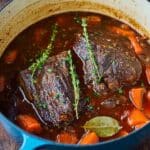
Classic Pot Roast Recipe
- Prep Time: 30 minutes
- Cook Time: 3 hours 30 minutes
- Total Time: 5 hours
- Yield: 8 servings
- Category: Main Course
- Method: Baking
- Cuisine: American
Description
This Classic Pot Roast recipe features a tender and flavorful beef chuck roast slow-baked with aromatic vegetables, herbs, and a rich red wine and beef stock braising liquid. Perfectly seared and oven-cooked until melt-in-your-mouth tender, this comforting dish is ideal for a hearty family meal. The recipe includes optional steps to thicken the sauce into a savory gravy, bringing out the full depth of flavors.
Ingredients
For the Pot Roast
- 4–5 lb beef chuck roast
- 4 tsp coarse salt, such as kosher salt, divided, or added to taste
- 1 1/2 tsp freshly ground black pepper, divided, or added to taste
- 1 Tbsp light olive oil, or any high-heat cooking oil
- 1 large yellow onion, coarsely chopped
- 4 garlic cloves, coarsely chopped
- 3 Tbsp tomato paste
- 1 cup dry red wine, such as Cabernet Sauvignon or Pinot noir
- 6 cups beef stock
- 5-6 whole carrots, peeled and cut into 2-inch pieces
- 2 bay leaves
- 6 sprigs of fresh thyme or 1 tsp dried thyme
- 1/2 cup coarsely chopped fresh parsley, plus more to garnish
To Thicken the Sauce (optional)
- 2 Tbsp cornstarch or flour (see notes)
Instructions
- Prepare the Roast: Generously season the beef chuck roast with 3 teaspoons of salt and 1 teaspoon of black pepper on all sides. Leave it uncovered at room temperature for 1 hour to ensure even cooking. Meanwhile, place the oven rack in the lower third of the oven and preheat it to 325˚F (163˚C).
- Sear the Roast: Heat 1 tablespoon of olive oil in a large Dutch oven (around 5 1/2 quarts) over medium-high heat. When the oil is hot but not smoking, add the roast and sear until golden brown on all sides, about 3 minutes per side. Once seared, transfer the roast to a plate and set aside.
- Sauté the Vegetables: Reduce heat to medium and add the coarsely chopped onions to the pot, sautéing until softened and golden, approximately 4 to 5 minutes. Add the chopped garlic and sauté for an additional 30 seconds until fragrant.
- Add Tomato Paste and Wine: Stir in the tomato paste and cook for 2 minutes to deepen the flavor. Pour in the dry red wine, scraping the bottom of the pot to deglaze and release browned bits. Cook until about one quarter of the wine has evaporated, roughly 2 to 3 minutes.
- Assemble and Bake: Add the beef stock, thyme sprigs, coarsely chopped parsley, bay leaves, remaining 1 teaspoon salt, and 1/2 teaspoon black pepper to the pot. Return the seared roast to the pot along with the peeled and cut carrots. Bring the mixture to a boil on the stovetop, then cover with the lid and transfer the Dutch oven to the preheated oven. Bake for 3 to 4 hours (depending on roast size) or until the meat is tender enough to shred easily with two forks.
- Serve: Remove the meat and shred it with forks. You may serve it with the cooking liquid and vegetables or proceed to thicken the sauce as desired.
- Thicken the Sauce (Optional): Remove the meat and vegetables, keeping them warm. To thicken the sauce, choose one method: (Option 1) Whisk 2 tablespoons of cornstarch with 2 tablespoons of water, bring the sauce to a boil, then stir in the slurry and simmer until thickened, removing any raw starch taste. (Option 2) Prepare a beurre manié by blending 2 tablespoons softened butter with 2 tablespoons flour into a paste, then gradually whisk it into the boiling sauce until it thickens.
Notes
- Oven Cooking Times: Bake until the roast is tender and easily pulls apart. Use an instant-read thermometer to check for doneness; the roast is done at 200-210˚F (93-99˚C). Approximate baking times: 3 lb roast: 2.5 to 3 hours; 4 lb roast: 3 to 3.5 hours; 5-6 lb roast: 3.5 to 4 hours.
- Storage: Store leftovers in an airtight container in the refrigerator for 3-4 days or freeze for up to 3 months. Thaw frozen leftovers overnight in the refrigerator and reheat gently on the stovetop.
- Thickening Options: Cornstarch slurry or beurre manié can be used to thicken the sauce based on personal preference.
Nutrition
- Serving Size: 1 serving (approximately 6 oz meat with sauce and vegetables)
- Calories: 450 kcal
- Sugar: 5 g
- Sodium: 700 mg
- Fat: 22 g
- Saturated Fat: 8 g
- Unsaturated Fat: 12 g
- Trans Fat: 0 g
- Carbohydrates: 12 g
- Fiber: 3 g
- Protein: 45 g
- Cholesterol: 120 mg

